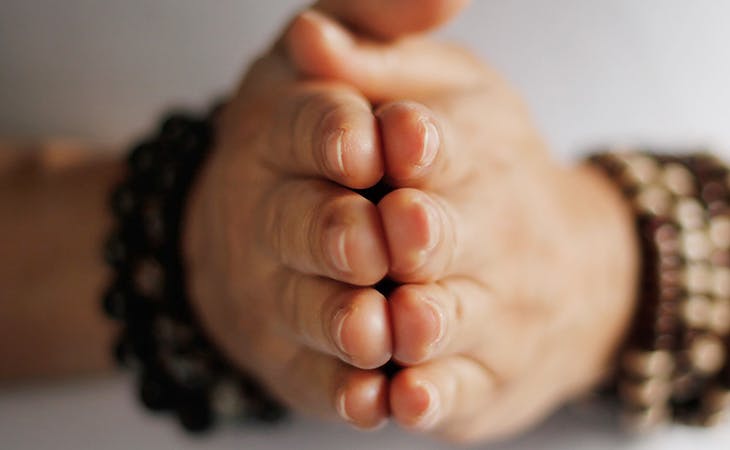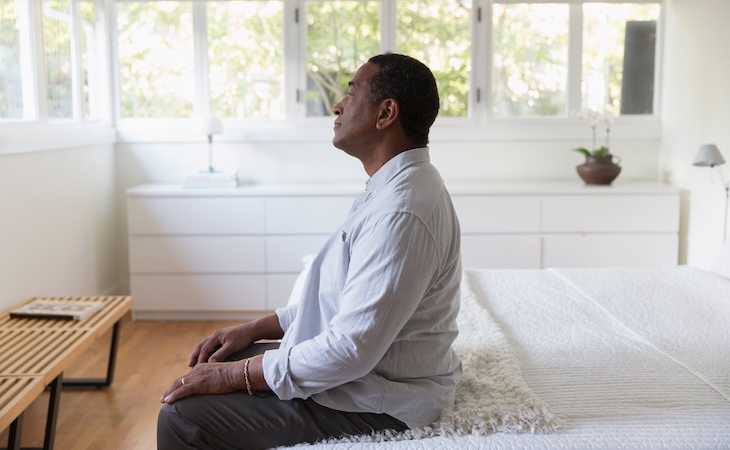You order cuisines from all over the world every time you log onto your food delivery app, wear clothing inspired by styles from Paris to Palm Springs, and have your home filled with treasures you’ve picked up along your travels. With so much of your life already influenced by the rest of the world, why not bring some of that global inspo to your sleep habits?
“Sleep behaviors, attitudes, and practices are shaped by local conditions, the environment, traditions, cultural, and societal norms,” says Terry Cralle, RN, certified clinical sleep educator. But even if most of your nighttime routines are influenced by your zip code, you can still bring some of the best of other cultures into your bedroom.
Here’s how to incorporate some of the healthiest sleep habits from around the world into your own life.
Take a siesta
Naptime isn’t just for kids. In Spain, many people break for a “siesta” for some midday rest. Research has shown that a short nap during the day—we’re talking 90 minutes or less—can boost alertness, productivity, and creativity. “I think in the U.S., many of us continue to see sleep and the need for sleep as a weakness,” says Cralle. “As a culture, Americans are much more likely to reach for caffeine throughout the day than take a nap. That’s unfortunate because short naps can be restorative.”
Sleep on the job
You already know that naps can pack major benefits, but it’s easier to swing by the break room and get a cup of coffee than it is to snooze in most offices. In Japan, “inemuri,” translated as “sleeping while present,” is pretty accepted. That means that conking out over your keyboard, on a bench during the day, or on a commuter train isn’t seen as a bad thing—instead, it’s a sign that you’re dedicated to your job.
While sacrificing sleep to burn the midnight oil at work has dangerous downsides, the idea of napping in the workplace is worth having a conversation about. “We have to educate about sleep continuously,” Cralle says. “Talking about sleep has really been left out of the corporate wellness approach.” Depending on your work culture, it might be worth floating the idea of sanctioned rest time or nap rooms to higher-ups or the team responsible for workplace health initiatives. More and more companies are doing this these days, with some positive results when it comes to productivity.
Get a “sleep divorce”
Some things are better solo—and bedtime might be one of them. In a 2013 sleep survey, more than 50% of the respondents from Japan slept alone, even if they were in relationships. If your partner kicks and snores, you might want to try setting off to separate rooms for a better night’s rest, says Cralle. “Think about how your love life is 100% better with your partner when you’re getting sufficient sleep,” she says, adding that not being disturbed at night could cut down on irritability and grogginess the following day. Worried about what the move says about the state or relationship? It’s time to let go of preconceived notions and do what’s best for you and your health. “We have lots of stigmas that we need to reevaluate,” Cralle says.
Prioritize getting eight hours of shuteye
The adage about getting eight hours of sleep per night is oft-repeated because it’s your best bet for feeling well-rested. And in the Netherlands, Finland, Australia, Belgium, and the U.K., where residents get an average of about eight hours of shuteye per night, it’s the norm. “We need that seven to nine hours every night of the week,” Cralle says. “We can make up for that sleep debt on the weekends, but we can’t undo the physical damage from the week.” Sleep deprivation—even for a short period—can be linked to metabolism issues and other health problems like diabetes, dementia, and Alzheimer’s disease. In addition to lowering your risk of certain health conditions, getting enough rest allows you to have enough energy to exercise and make better food choices, Cralle says.
Embrace your inner clock
Early bird gets the worm? Not always. “In our society, we may have overstated the benefits of being early to bed, early to rise,” says Cralle. “Now we’re learning everybody kind of has a type.” Each person has a sleep chronotype, or individual wiring, which determines what times of day are your most energetic and restful. Belgium residents tend to go to bed on the earlier side, while those living in Spain and Singapore hit the hay the latest, according to Time. The key to avoiding the effects of sleep deprivation is getting enough snoozing time overall, no matter the exact wake time you choose.
Experiment with your sleep routine
Whether you adopt the habit of sleeping in the buff, like millennials in the U.S., or choose a futon, like in some parts of Asia, tweaking your surroundings to find the optimal way to sleep is always a good idea. “I think always looking to different things to see if it helps is always a good plan,” Cralle says. “Be proactive about sleep quality.” Some trends may not work for everyone—say sleeping in the nude if you have a full household or small kids or resting on a hard surface if you have joint issues. But testing some trends out may help you get closer to finding the ideal bedroom environment for you.
Take a moment to reflect
Ending the night with a moment of reflection can improve your sleep. In a 2013 survey, 62% of survey respondents from Mexico and 42% of Americans said they pray or meditate before bedtime. According to Harvard Medical School, doing some meditation or calming exercise before sleep may lead to less insomnia, fatigue, and depression. Take a few moments to repeat a calming mantra, or reflect spiritually if you’re so inclined. Sweet dreams!
Learn how to make mindfulness part of your pre-bedtime routine with this guide to meditation.




